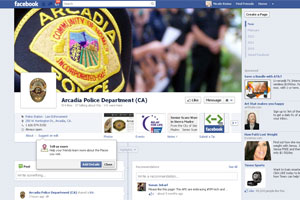Can the police and community have their cake..and eat it too in the digital world we now live in?
Community and police collaboration for success and safety worldwide reached a new level of trust and understanding this week at The SMILE Conference in Vancouver. The event was co-produced by LAwS Communications and the Canadian Association of Chiefs of Police.
LAwS Communications and the Canadian Association of Chiefs of Police are to be congratulated for their hosting of the 5th Social Media, Internet Law Enforcement conference, affectionately known as The SMiLE Conference March 25 – 28, 2012 in Vancouver, BC Canada. Raytheon, Lexis Nexis, and American Military University deserve special mention for their sponsorship of this conference.
More than one hundred fifty delegates attended the event that featured presentations and networking on the “how to” use social media platforms to help stop, solve and prevent crimes together worldwide.
The mutual respect and understanding that was generated among the delegates in the room spread far beyond the venue as tweets and Facebook posts back and forth between community members and police worldwide using the twitter hash tag #smilecon.
A highlight of the event was a Panel Discussion moderated by Deputy Chief Peter Sloly of Toronto Police titled “Social Activism, Policing, Privacy and New Challenges”on Tuesday, March 27th that featured Mr. Dave Teixeira of Vancouver, President of Dave.ca Communications, Ms. Paisley Rae, a community builder from Toronto, Dr. Kristene Unsworth, Assistant Professor from Drexel University who joined via Skype from Berlin, Germany, Constable Anne Longley, Social Media Officer, Vancouver Police Department.
The outcome of this panel went far beyond the objective listed in the program as:
From hockey riots to the G20 forum of world leaders, today’s policy leaders are facing new challenges posed by new media and the people who use them. These panelists have either lived within the frenzy of citizen protest, studied the ramifications of privacy infringement, or actively managed the experience from a police perspective. The panel is moderated by one of the world’s foremost leaders in social media in policing.
Part 1:
Part 2:
It became very apparent that the community expects police to “get human” and “be human” in real life and in social media. When the police make a mistake, the public expect to hear the words “I’m sorry” from the leaders of their policing organizations. It also was very apparent that the police were demanding more participation than ever before form the public in community safety efforts, and that the police were at the table and prepared to listen to the community.
Community Volunteer @PaisleyRae Meets The Hague Police
Perhaps the best outcome of this conference for me was speaker and conference delegate Mr. Guus Auerbach, Chief of Digital Forensics at The Hague Police Service speaking with community member Paisley Rae after this panel about exactly how social media was being used to facilitate lawful, peaceful protest at The Hague in collaboration with politicians, the police and activists. It was heartwarming to see the passion of these two brilliant minds talk candidly about saving lives and making the world a better, safer and more peaceful place for everyone. Auerbach said “We’ve always focused on the chances, not the threats that social media brings us. The chances are winning and they are very diverse.”I urge anyone who was at SMILE, watched it from afar on the live streams or haven’t yet check it out to spend a few hours reviewing the content of this conference, as well as the four previous SMILE Conferences in Washington, DC, Chicago, Illinois, Santa Monica, California and Dallas, Texas.
The world is changing, and it is changing for the better. Social media communication platforms are allowing the people to speak, and the voices are being heard!
The irony of this tweet from Paisley Rae upon leaving Vancouver is what community is all about. I met Paisley Rae on twitter during a chaotic G20 weekend in June 2011 in Toronto. She was angry and letting her anger at Toronto Police show loud and clear on twitter. In my capacity of social media officer for the Toronto Police Service I conveyed words to the effect on twitter that said “I’m sorry”.
As I boarded the plane home with Constable Nathan Dayler of the Toronto Police Service Public Order Unit and the newly appointed Social Media Officer for the Royal Turks and Caicos Police Kevin Clarke I received this tweet from Paisley Rae. (For context, my twitter name is “GraffitiBMXCop”
From: @paisleyrae
Sent: Mar 28, 2012 2:23p@eva_starlily Armed with arms & Dangerous: suspicious person. Warning – will hug you. @GraffitiBMXCop
sent via UberSocial for BlackBerry in reply to @eva_starlily
On Twitter: http://twitter.com/paisleyrae/status/185114911540658176
#OccupyTO #OWS Meets @DeputySloly On Twitter
I will conclude this blog post with a tweet I saw shortly before boarding the plane home from the Vancouver SMiLE Conference from Daniela Aum, a Toronto based activist who was involved in G20 and the Occupy Toronto movement. The tweet says it all about the outcome and value of the Vancouver SMILE Conference.
From: @daniela_aum
Sent: Mar 28, 2012 6:19preading solution oriented tweet convos bewtween #Occupy & @TorontoPolice = wonderful. Well done @DeputySloly
sent via Twitter for iPhone
On Twitter: http://twitter.com/daniela_aum/status/185129132731006977
Think of the possibilities if officers from around the world are engaging with their communities using social media for success and safety.
It looks like the community and the police can have their cake….and eat it too!
The event was live streamed on the LAwSComm UStream channel for the world to see, hear and share by a collaboration of officers led by RCMP Ontario Communications Specialist Jean Turner-Floyd, assisted by Constable Stephen Welton of Hamilton Police Service, Constable Rebecca Boyd and Stephanie Mackenzie-Smith of York Regional Police and Constables Nathan Dayler and Scott Mills of Toronto Police Service.
The next SMiLE Conference occurs September 10th, 11th, 12th, 2012 hosted by Chief Bryan T. Norwood and the men and women of the Richmond, Virginia Police Department.
This will be the occasion of the first annual ConnectedCops Awards sponsored by Lexis Nexis, Nixle and partnered with The SMILE Conference, Crime Stoppers International, Gov Loop, The Social Media Monthly magazine, The Association of Chief Police Officers, Public Communications Worldwide, Law Offficer and PoliceOne. Award descriptions and other details are available at ConnectedCOPS.net. Nominations will be open April 1st through May 31st. Judging will take place June 1st through July 31st.











 Today’s frivolous post looks at similar foolhardy acts committed by police and prison officers who really should have known better.
Today’s frivolous post looks at similar foolhardy acts committed by police and prison officers who really should have known better.